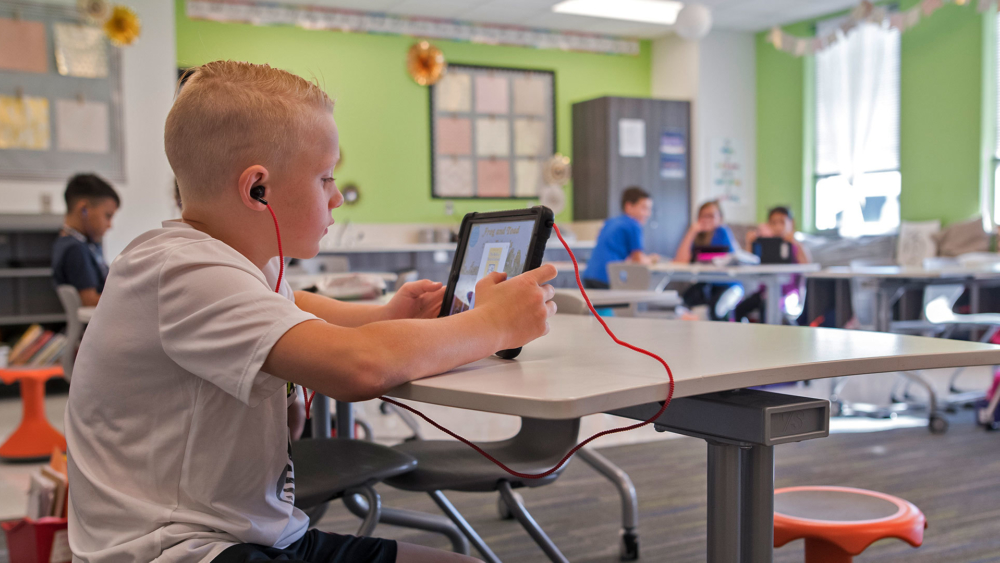
The Influence of Generation Z Learners
Each of us is motivated by something, and we have our interests, including students who bring their unique proclivities to the classroom. Meaningful learning depends on how effective educators tap into students' motivations. Today, regardless of the motives they bring, students generally require an active learning environment. They like to see, touch, listen, and move repeatedly; they need these things simultaneously. They want to be visually stimulated by the videos that inform them of every topic imaginable as they hold and manipulate their technology device of choice while reclining on flexible furniture. They expect immediate feedback. They are comfortable learning by discovering their environment and participating, not just by sitting and listening. 'They' are Generation Z, and we have been graduating them from high schools for a few years. Their parents are generally Gen Xers, who had to contemplate the best age to buy their child's first phone. Was fifth grade too early or too late? Did they need independence that soon? What they would seek and find on the internet educated both the child and the parent.
Gen Z students are now attending middle schools, high schools, and colleges. As a society, they are changing the way we shop, and they expect everything to be delivered. Research has informed us that the plasticity in the brain has changed with the younger generation, and meeting the needs of the learner now requires a unique approach. It's been proven; they are different! Gone are the days of lectures and note-taking. Students are comfortable responding to their environment, and socialization is critical to their development. Now, students gather at Starbucks to complete projects. Achieving collaboration and stimulation through technology has redefined homework time.
What does this mean for education? Pedagogy is evolving to allow for student choice and creativity. Generation Z led the way, informing educators that the approach had to change. Some students still find lecture note-taking pleasing, but generally, the way to tap into a student's motivation is to present the material in a variety of ways: by another student, or with a tactile opportunity to make a better sense of curricula. All of this, coupled with ever-evolving technology advancements, make it extremely important to understand how to support learning behaviors. They watch YouTube videos and are comfortable with their presence in every corner of our universe. They are aware of concepts of sustainability, and they recycle. Most importantly, they require us to respond.
Sure, instructional changes in the classroom are critical to the development of students, but what about other aspects of the learning environment? What does this mean for the built environment? The best designs resulted from a process where architects were forced to think about the spaces in which students learn. (Bouillion, Oliveras-Ortiz, & Asbury, 2019; Oliveras-Ortiz, Bouillion, & Asbury)
Teachers need space to support student learning in classrooms adequately. This doesn't necessarily mean a large space. Rather, it requires purposefully designed space that allows for evolving instructional methodologies and flexible grouping of student sizes to foster independent work, partner work, and groups large and small. (Oliveras-Ortiz, Bouillion, & Asbury, in press) Teachers need designed space to allow for instructional options such as collaboration, flexibility, and an extension of the learning environment, which may also require the inclusion of transparency to ensure supervision throughout instruction.
Remember the traditional desk? In so many instances, a reiteration of it still exists in most classrooms, and too many times, they are still arranged in rows, all facing the teacher, and allowing for little student-to-student collaboration. (Oliveras-Ortiz, Bouillion, & Asbury, in press) Students need to be a part of reconfiguring the classroom space with furniture that moves with them depending on their research needs, levels of collaboration required, and floor space.
Expectations for integrated curricula and an inquiry-based instructional approach demand a learning environment that is conducive for students, their materials, and their projects. For example, in a Project-based Learning experience launch, all students need to hear and experience the same expectations from the teacher. However, the need for ample group instructional space is minimal until the end of the project. Much of what we expect at the end of a curricular unit is the ability for students to present what they learned. In this case, students need a venue for both informal and formal presentations. How will those projects be displayed? Are they physical models, electronic presentations, or lectures? Perhaps it's a skit, a song, or a musical production. We must think about space differently, and provide both the flexibility and the resources for students to make the best choices about their project solutions.